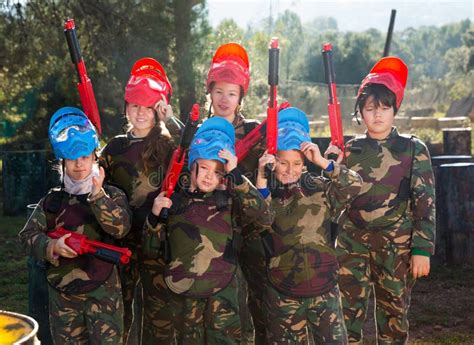Is Your Child Ready for Paintball? Find Out Now!
Paintball is an exciting and engaging sport that combines strategy, teamwork, and adrenaline. However, it's crucial to determine if your child is ready for the physical and mental demands before introducing them to the activity. This isn't just about age; it's about maturity, understanding, and adherence to safety regulations. This guide will help you assess whether your child is truly prepared for the paintball field.
What Age is Appropriate for Paintball?
There's no single magic number. Many paintball fields set minimum age requirements, typically around 10 or 12 years old, but this is often coupled with height and weight restrictions. However, even meeting the minimum age doesn't guarantee readiness. A mature 10-year-old might be better suited than an immature 14-year-old.
How to Determine Maturity Level:
Consider these factors when assessing your child's readiness:
- Understanding of Safety Rules: Can your child comprehend and follow complex instructions related to safety? This includes understanding the importance of eye protection, proper weapon handling, and listening to the field marshal's directions.
- Emotional Regulation: Paintball can be intense. Can your child handle potential frustration, minor injuries, or the pressure of competition without losing their temper or becoming overly upset?
- Physical Capabilities: Paintball requires a degree of physical stamina and dexterity. Can your child handle running, crouching, and aiming a marker for extended periods? Are they capable of carrying their equipment?
- Respect for Rules and Other Players: Paintball is a game of fair play. Can your child respect the rules, opponents, and the overall game etiquette?
- Communication Skills: Effective communication is vital in a team-based sport like paintball. Can your child communicate their needs and strategies clearly and respectfully?
What are the Safety Concerns of Paintball for Kids?
Safety is paramount in paintball. While generally safe when proper protocols are followed, potential risks include:
- Eye Injuries: The most significant risk is eye injury from paintballs or stray projectiles. This is why proper eye protection is non-negotiable.
- Bruising and welts: Paintballs can sting and leave welts, especially if they hit exposed skin.
- Minor Injuries: Trips, falls, and minor scrapes are common occurrences in the fast-paced environment.
These risks can be significantly mitigated by following safety guidelines, ensuring your child understands and adheres to them, and choosing a reputable paintball field with experienced staff.
What if My Child is Too Young?
If you determine your child isn't ready, don't worry. Many other exciting activities are age-appropriate and can develop skills relevant to paintball later. Consider activities that foster:
- Teamwork: Sports like soccer, basketball, or even cooperative board games.
- Strategic Thinking: Games requiring planning and problem-solving.
- Physical Fitness: Running, hiking, or other physical activities.
These experiences can prepare your child for paintball in the future.
Choosing a Suitable Paintball Field
A reputable paintball field will prioritize safety. Look for fields that:
- Have strict age and safety requirements.
- Provide comprehensive safety briefings before play.
- Employ trained marshals to oversee games.
- Maintain well-maintained equipment.
- Offer appropriate equipment rentals for children.
Does my Child Need Special Paintball Gear?
While many fields provide rentals, investing in your child's personal protective gear is a wise move. High-quality eye protection is crucial and should always be worn. Comfortable clothing is also essential, as is appropriate footwear.
In conclusion, determining if your child is ready for paintball is a decision based on a holistic assessment of their maturity, understanding of safety, and physical capabilities. Prioritizing safety, selecting a reputable field, and carefully considering your child's developmental stage will ensure a positive and enjoyable experience.

